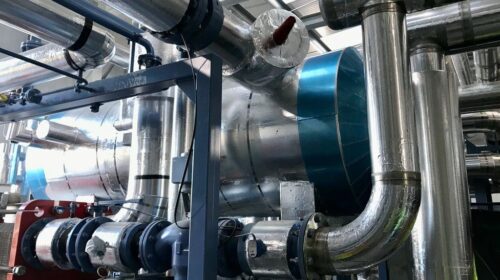The war in Ukraine has forced a rethink of where we get our energy from as Europe tries to wean itself off Russian gas. But could super-sized heat pumps help to heat thousands of homes and businesses? Two huge schemes are about to be switched on in Gateshead and London – and the hope is they could provide a greener and cheaper source of warmth.
“Coal mining was massive in the North East,” says Jim Gillon, walking across a building site in Gateshead.
“And where we’re standing there are six different mine workings beneath our feet.”
Jim is the Energy Services Manager for Gateshead Council – and he’s giving this former fossil fuel site a green makeover for an ambitious new heating scheme.
He points to a borehole that descends 150m beneath the muddy earth. Like many old coal mines, it’s now flooded with water. But the water is naturally warm at 15C – and this heat is key.
It’s a clever bit of engineering. In the same way that warmth can pass from one person to another when they shake hands, the warmth from the mine water is transferred into another liquid that circulates in the heat pump system.
Under pressure the liquid turns to gas, then compressors squish and squeeze it, which boosts the temperature to 80C.
This heat is sent out through pipes to be used by buildings in the local area. The mine water is sent back underground so the process can begin again.
The small, individual heat pumps that people install in their homes work using the same principle. They take some warmth – whether it’s from the air or the ground – and then increase the temperature, providing heat for that one household.
But the heat pump in Gateshead is so large that at full capacity it can provide heat for the equivalent of 5,000 homes.”We’re really pleased that we’ve taken the legacy of the coal mining and we’re turning that negative asset into a positive future source of energy,”







